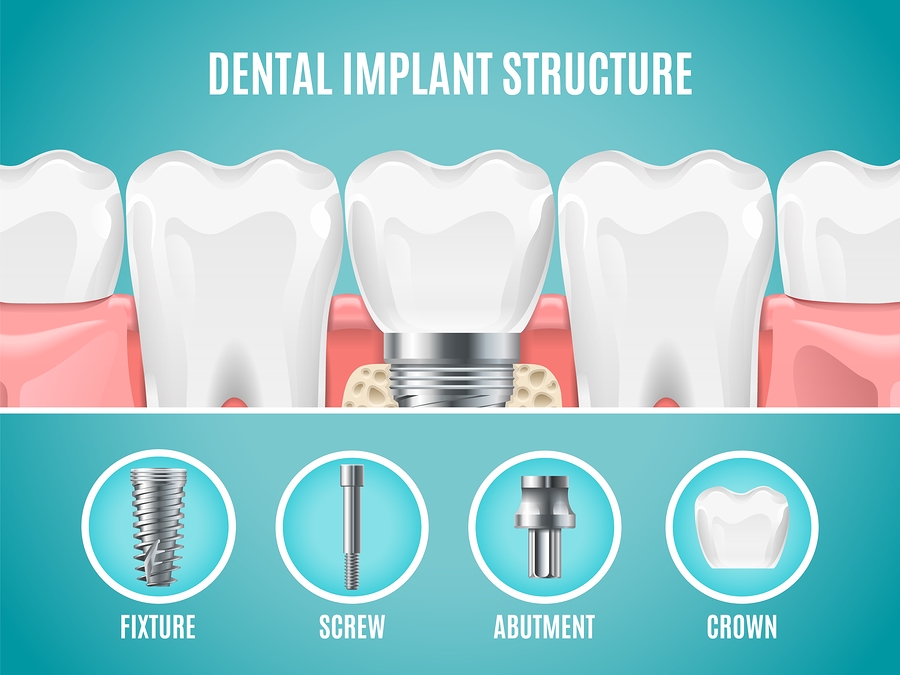All about Dental Sense
Table of ContentsNot known Facts About Dental SenseThings about Dental SenseThe Ultimate Guide To Dental SenseThe Best Strategy To Use For Dental Sense
are clinical tools operatively implanted right into the jaw to recover an individual's capability to chew or their appearance. They provide support for synthetic (fake) teeth, such as crowns, bridges, or dentures. When a tooth is shed as a result of injury or illness, a person can experience problems such as rapid bone loss, malfunctioning speech, or modifications to chewing patterns that result in discomfort.Dental dental implant systems include a dental implant body and oral implant abutment and may also include an abutment fixation screw. Cosmetic dentistry services. The oral implant body is surgically placed in the jawbone in area of the tooth's origin. The oral implant joint is usually connected to the dental implant body by the abutment fixation screw and prolongs through gum tissues right into the mouth to sustain the attached fabricated teeth
(https://www.easel.ly/browserEasel/14548839)Framework of The Dental Implant System choosing dental implants, speak to your dental supplier regarding the prospective benefits and risks, and whether you are a candidate for the treatment. Things to think about: Your general health is an essential consider identifying whether you are a great candidate for dental implants, the length of time it will take to recover, and for how long the dental implant may stay in location.
Cigarette smoking may influence the recovery process and lower the lasting success of the implant. The recovery process for the dental implant body may take a number of months or longer, during which time you normally have a momentary joint instead of the tooth. the dental implant treatment: Very carefully follow the oral hygiene guidelines offered to you by your oral provider.
The Best Guide To Dental Sense
Implant failure can cause the need for one more medical treatment to take care of or change the implant system. Restores the capacity to chew Brings back aesthetic look Assists keep the jawbone from shrinking as a result of bone loss Preserves the wellness of the bordering bone and periodontals Assists keep adjacent (nearby) teeth steady Improves quality of life Damage to surrounding natural teeth throughout implant positioning Injury to the surrounding tissues throughout surgery, such as sinus opening Injury during surgical treatment (as an example, fracture of bordering jawbone) Insufficient function, such as seeming like the teeth do not attack with each other normally A feeling that the tooth is loose or turning in area resulting from a joint screw loosening up Implant body failing (looseness of the implant body) due to systemic infection, which might be most likely in patients with uncontrolled diabetics issues because of regional infection in bone and gum tissues supporting the implant body because of delayed healing, which might be most likely in individuals who smoke Problem cleansing the periodontals around the dental implant, leading to bad oral hygiene Without treatment gum illness Post-surgical tingling because of nerve impingement or damage Constantly alert healthcare carriers and imaging service technicians that you have dental implants prior to any kind of magnetic vibration imaging (MRI) or x-ray treatments.
FDA is not aware of any adverse events reported for MRI or x-ray treatments with dental implants. Oral implants systems are usually constructed from materials that follow international consensus standards of the International Company for Standardization (ISO) or ASTM International. These requirements have information of what makes a safe material.

An oral implant is a framework that changes a missing tooth. With screw-like gadgets, the doctor inserts a dental implant into the jawbone, and it acts as an anchor for a man-made tooth, called a crown.
8 Easy Facts About Dental Sense Explained
Some people are not eligible for oral implant surgical treatment. It is for oral specialists to operate people with: severe illnessuncontrollable metabolic diseasebone or soft tissue condition or infectionIf these concerns are dealt with, an individual can have the surgical treatment. In, dental doctors refrain from operating individuals with: If people with any of the above go through dental implant surgery, there is a higher risk of the dental implant stopping working.

Dental dental implant surgical procedure is a tailored procedure. It's not the very same for every person. The adhering to gives a general introduction of what you try this site can anticipate your dentist, oral doctor, periodontist or prosthodontist to do: Put the dental implant operatively. Give you time to heal. Affix the blog post and final crown, bridge or denture.
Next off, your doctor will meticulously place the dental implant into your jaw. Ultimately, your specialist will certainly rearrange your gums and shut the laceration with stitches. If your implant is near the front of your mouth, your dental professional will make a momentary tooth for you to use up until you heal. By doing this, you won't have a gap in your smile while you recoup.
Dental Sense for Dummies
Throughout the recovery phase, your jawbone needs to fuse to the dental implant. This procedure can take anywhere from 3 to nine months.
As soon as your implant heals, your dental professional can attach the abutment (little connector blog post) and your final remediation (crown, bridge or denture). This generally takes concerning one hour to finish and might need a 2nd minor surgical treatment. You shouldn't really feel any kind of pain throughout your dental implant procedure due to the fact that your copyright will utilize drug to numb your gums.